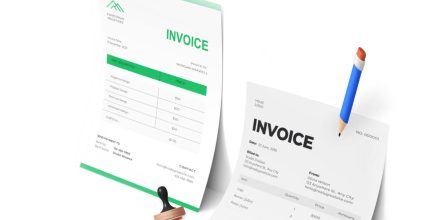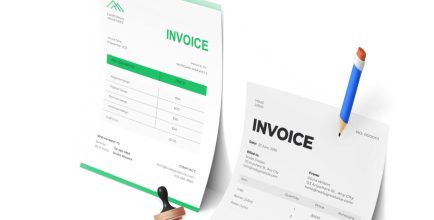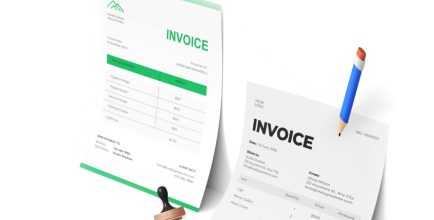Designing for Visual Accessibility
Readable Fonts
When designing for visual accessibility, selecting the right font is paramount. Recommended font types include sans-serif fonts such as Arial, Helvetica, and Verdana. These fonts are typically easier on the eyes, improving readability for a wider audience, including those with dyslexia. Sizes of 12pt for text and at least 14pt for headings are suggested to aid legibility. It’s crucial to avoid fonts with overly decorative styles or those that closely mimic handwriting, as these can confuse readers with dyslexia.
Color Contrast
For sufficient readability, the contrast ratio between text and its background should meet or exceed the WCAG (Web Content Accessibility Guidelines) standards. A minimum contrast ratio of 4.5:1 for normal text and 3:1 for large text is recommended to ensure that content is accessible to users with vision impairments, including color blindness. To verify that your design meets these guidelines, tools such as the WebAIM Contrast Checker or the Color Contrast Analyzer can be invaluable resources. These tools help designers evaluate their invoices’ visual accessibility and make the necessary adjustments to comply with accessibility standards.
Inclusive Format Options
Braille Invoices
Offering invoices in Braille is an essential step towards inclusivity, enabling visually impaired customers to access billing information with ease. To incorporate Braille invoices:
- Identify a Braille Translation Service: Collaborate with experts in Braille translation to ensure accurate and accessible billing information.
- Formatting for Braille: Be cognizant of Braille’s unique formatting requirements for optimal readability.
- Timely Distribution: Account for the extra time needed for translation and distribution to maintain consistent billing cycles.
Audio Invoices
Audio invoices extend accessibility further, meeting the needs of customers who benefit from auditory information. Key practices include:
- Simplicity in Language: Use straightforward language for clear understanding.
- Professional Recording: Engage a professional or a clearly spoken staff member for recording, ensuring a noise-free background.
- Comprehensive Details: Offer complete descriptions of charges and payment instructions, catering to the format’s inability to be skimmed.
- Accessible Distribution: Make audio invoices available through email, downloadable links, or a dedicated phone line for easy access by customers.
Technical Accessibility Features
Alt Text for Images and Graphs
In enhancing the accessibility of digital invoices, providing descriptive alt text for images and graphs is crucial. Alt text serves as a verbal representation of visual information, ensuring that users relying on screen readers can fully understand the content presented in these formats. When crafting alt text:
- Be Concise and Descriptive: Clearly explain what is displayed, focusing on the information or context the image or graph provides.
- Include Data Points: For graphs, mention key data points and trends to convey the graph’s message without visual inspection.
- Avoid Redundant Phrases: Start directly with the description rather than using phrases like “image of…” or “graph showing…”.
Navigable Structure
For users who depend on keyboard navigation or screen readers, the structure of digital invoices must be intuitive and easily navigable. This requires:
- Logical Heading Hierarchy: Use headings correctly to structure content, making it easier for screen reader users to understand the layout and skip to relevant sections.
- Keyboard Shortcuts: Implement keyboard shortcuts for common actions (e.g., pay now, view details) to assist users who cannot use a mouse.
- Screen Reader Compatibility: Ensure that all elements, including links, form fields, and buttons, are properly labeled and accessible via screen readers.
Importance of Logical Heading Structure
A logical heading structure is not just beneficial for SEO but is essential for accessibility. It guides the user through the document, providing clarity and context. Headings should be used sequentially (H1 followed by H2, etc.) to delineate sections and sub-sections. This organizational approach helps users with disabilities comprehend the structure and content of an invoice, making navigation simpler and more efficient. A well-organized document with clear headings significantly enhances the user experience for all customers, reinforcing a brand’s commitment to accessibility and inclusivity.
Legal and Ethical Considerations
Globally, legislation such as the Americans with Disabilities Act (ADA) in the US, Accessibility for Ontarians with Disabilities Act (AODA) in Canada, European Accessibility Act (EAA) in the EU, and Disability Discrimination Act (DDA) in Australia underscores the importance of digital content accessibility, including financial documents. These laws ensure that individuals with disabilities have equal access to services, promoting inclusivity in all aspects of public life.
Ignoring accessibility in invoicing isn’t just a legal oversight; it carries significant ethical implications. Inaccessible financial documents create barriers to independence and privacy for individuals with disabilities, reflecting a lack of empathy and understanding.
Such neglect can harm a brand’s reputation, showing indifference to customer needs and social responsibility. Prioritizing accessibility in invoicing is, therefore, both a legal requirement and a moral duty, emphasizing a commitment to equality, inclusion, and respect for all customers.
Conclusion
Accessible invoicing is not merely a regulatory requirement; it embodies the essence of corporate social responsibility (CSR). By prioritizing accessibility, companies demonstrate their commitment to serving all segments of society inclusively.
This commitment positions them as leaders in fostering equality and ensuring that no customer is left behind due to preventable barriers. In the spirit of continuous improvement and innovation, businesses are encouraged to not only adhere to current accessibility standards but to actively seek new ways to enhance the usability and inclusiveness of their invoicing processes.
Advancements in technology and design offer untapped potential to make financial transactions more accessible, thereby reinforcing a brand’s dedication to CSR. Forward-thinking companies that invest in accessible invoicing solutions will not only comply with legal standards but will also build stronger relationships with their customers, enhancing brand loyalty and trust.



